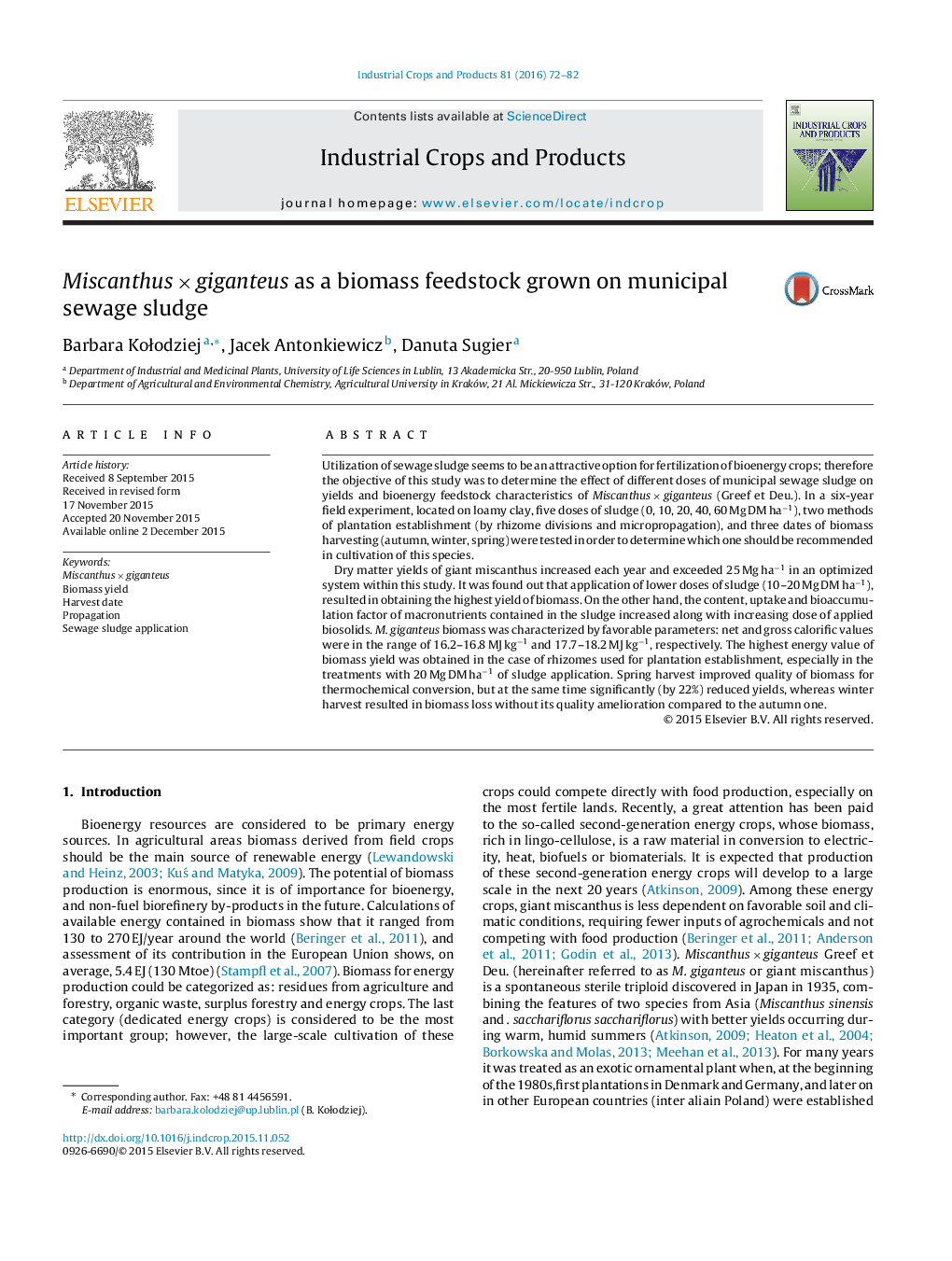| کد مقاله | کد نشریه | سال انتشار | مقاله انگلیسی | نسخه تمام متن |
|---|---|---|---|---|
| 4512455 | 1624829 | 2016 | 11 صفحه PDF | دانلود رایگان |

• Giant miscanthus biomass yields exceeded 25 Mg ha−1 within this study.
• The highest yields were obtained after 10 and 20 Mg DM ha−1 of sewage sludge.
• Rhizomes seems the best method of plantation establishment.
• Spring harvest improve biomass quality but reduce yields compared to the autumn one.
Utilization of sewage sludge seems to be an attractive option for fertilization of bioenergy crops; therefore the objective of this study was to determine the effect of different doses of municipal sewage sludge on yields and bioenergy feedstock characteristics of Miscanthus × giganteus (Greef et Deu.). In a six-year field experiment, located on loamy clay, five doses of sludge (0, 10, 20, 40, 60 Mg DM ha−1), two methods of plantation establishment (by rhizome divisions and micropropagation), and three dates of biomass harvesting (autumn, winter, spring) were tested in order to determine which one should be recommended in cultivation of this species.Dry matter yields of giant miscanthus increased each year and exceeded 25 Mg ha−1 in an optimized system within this study. It was found out that application of lower doses of sludge (10–20 Mg DM ha−1), resulted in obtaining the highest yield of biomass. On the other hand, the content, uptake and bioaccumulation factor of macronutrients contained in the sludge increased along with increasing dose of applied biosolids. M. giganteus biomass was characterized by favorable parameters: net and gross calorific values were in the range of 16.2–16.8 MJ kg−1 and 17.7–18.2 MJ kg−1, respectively. The highest energy value of biomass yield was obtained in the case of rhizomes used for plantation establishment, especially in the treatments with 20 Mg DM ha−1 of sludge application. Spring harvest improved quality of biomass for thermochemical conversion, but at the same time significantly (by 22%) reduced yields, whereas winter harvest resulted in biomass loss without its quality amelioration compared to the autumn one.
Figure optionsDownload as PowerPoint slide
Journal: Industrial Crops and Products - Volume 81, March 2016, Pages 72–82